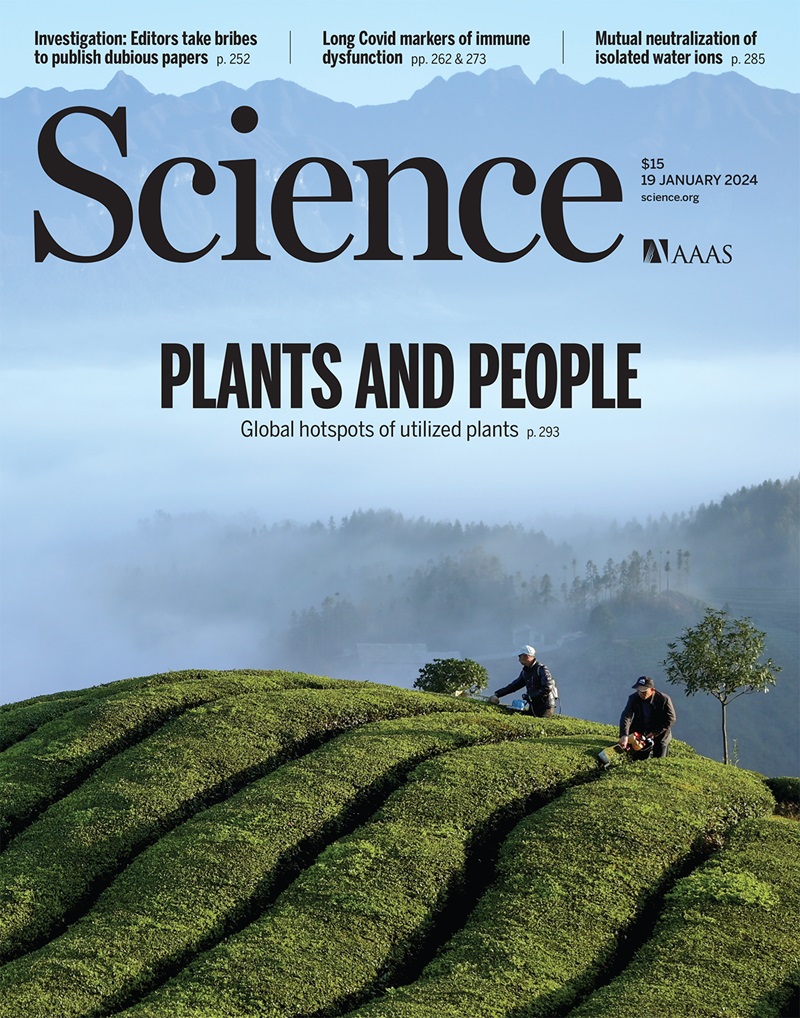Structure of the FKBP12-Rapamycin Complex Interacting with Binding Domain of Human FRAP
IF 45.8
1区 综合性期刊
Q1 MULTIDISCIPLINARY SCIENCES
引用次数: 791
Abstract
Rapamycin, a potent immunosuppressive agent, binds two proteins: the FK506-binding protein (FKBP12) and the FKBP-rapamycin-associated protein (FRAP). A crystal structure of the ternary complex of human FKBP12, rapamycin, and the FKBP12-rapamycin-binding (FRB) domain of human FRAP at a resolution of 2.7 angstroms revealed the two proteins bound together as a result of the ability of rapamycin to occupy two different hydrophobic binding pockets simultaneously. The structure shows extensive interactions between rapamycin and both proteins, but fewer interactions between the proteins. The structure of the FRB domain of FRAP clarifies both rapamycin-independent and -dependent effects observed for mutants of FRAP and its homologs in the family of proteins related to the ataxia-telangiectasia mutant gene product, and it illustrates how a small cell-permeable molecule can mediate protein dimerization.
与人类 FRAP 结合域相互作用的 FKBP12-雷帕霉素复合物的结构
雷帕霉素是一种强效免疫抑制剂,能与两种蛋白质结合:FK506 结合蛋白(FKBP12)和 FKBP-雷帕霉素相关蛋白(FRAP)。分辨率为 2.7 埃的人类 FKBP12、雷帕霉素和人类 FRAP 的 FKBP12-雷帕霉素结合(FRB)结构域三元复合物晶体结构显示,由于雷帕霉素能够同时占据两个不同的疏水结合口袋,因此这两种蛋白质结合在了一起。该结构显示雷帕霉素与两种蛋白之间存在广泛的相互作用,但蛋白之间的相互作用较少。FRAP的FRB结构域的结构澄清了在FRAP突变体及其与共济失调-特朗吉特氏症突变基因产物相关的同源蛋白家族中观察到的雷帕霉素非依赖性和依赖性效应,并说明了一种细胞渗透性小分子是如何介导蛋白质二聚化的。
本文章由计算机程序翻译,如有差异,请以英文原文为准。
求助全文
约1分钟内获得全文
求助全文
来源期刊

Science
综合性期刊-综合性期刊
CiteScore
61.10
自引率
0.90%
发文量
0
审稿时长
2.1 months
期刊介绍:
Science is a leading outlet for scientific news, commentary, and cutting-edge research. Through its print and online incarnations, Science reaches an estimated worldwide readership of more than one million. Science’s authorship is global too, and its articles consistently rank among the world's most cited research.
Science serves as a forum for discussion of important issues related to the advancement of science by publishing material on which a consensus has been reached as well as including the presentation of minority or conflicting points of view. Accordingly, all articles published in Science—including editorials, news and comment, and book reviews—are signed and reflect the individual views of the authors and not official points of view adopted by AAAS or the institutions with which the authors are affiliated.
Science seeks to publish those papers that are most influential in their fields or across fields and that will significantly advance scientific understanding. Selected papers should present novel and broadly important data, syntheses, or concepts. They should merit recognition by the wider scientific community and general public provided by publication in Science, beyond that provided by specialty journals. Science welcomes submissions from all fields of science and from any source. The editors are committed to the prompt evaluation and publication of submitted papers while upholding high standards that support reproducibility of published research. Science is published weekly; selected papers are published online ahead of print.
 求助内容:
求助内容: 应助结果提醒方式:
应助结果提醒方式:


